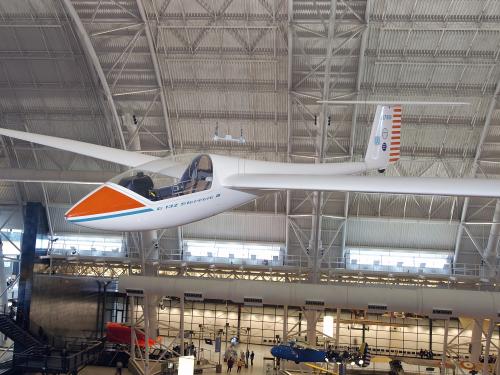On a dare from another pilot, Ray Stits designed and built the Sky Baby at his home in Riverside, California, to prove that he could build the world's smallest man-carrying airplane. To test fly the tiny aircraft, Stits hired Robert H. Starr who took off on the first flight in April 1952. During the spring and summer, Starr flew the SA-2A at air shows around the nation before Stits retired the airplane in November. Starr reported that the Sky Baby could top 299 kph (185 mph) at full speed and touched down for landing at about 129 kph (80 mph).
To keep the overall dimensions of the SA-2A as small as possible, Stits chose a biplane layout with negative-stagger, full-cantilever wings, and a conventional, cruciform empennage. No one disputed Stits's claim until the 1980s when Starr, the man who flew the SA-2A, announced that he had built an aircraft that was smaller than the Sky Baby. Ray's son, Donald, responded by designing the world's smallest monoplane. September 2002, the "Guiness Book of Records" acknowledged the "Bumble Bee II," built by Starr, as the world's smallest biplane, and the "Baby Bird," designed by Donald Stits, as the smallest monoplane.
Display Status
This object is on display in Sport Aviation at the Steven F. Udvar-Hazy Center in Chantilly, VA.
Object Details
Country of Origin
United States of America
Type
CRAFT-Aircraft
Manufacturer
Ray Stits
Physical Description
Wingspan: 2.2 m (7 ft 2 in)
Length: 3.0 m (9 ft 10in)
Height: 1.5 m (5 ft)
Weights: Empty, 205.5 kg (452 lb)
Gross, 302.7 kg (666 lb)
Engine: Continental four-cylinder, four-cycle, 85 horsepower
Dimensions
Other: 60 x 118 x 86 in., 205kg (152.4 x 299.7 x 218.5cm, 452lb.)
Materials
Steel alloy- “Chromoly”, ferrous alloy, clear plastic, wood, fabric, rubber, paint
Inventory Number
A19730248000
Credit Line
Gift of Ray Stits.
Data Source
National Air and Space Museum
Restrictions & Rights
Open Access (CCO)
For more information, visit the Smithsonians Terms of Use.






